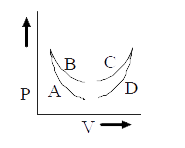The exchange of material between the blood and surrounding cells takes places through :
Arteries
veins
Capallaries
Nephrons
The correct Answer is:C
To solve the question regarding the exchange of material between the blood and surrounding cells, we need to analyze the options provided.
1. Understanding the Blood Circulation System:
- The circulatory system consists of different types of blood vessels: arteries, veins, and capillaries. Each has a specific function in the transport of blood.
2. Analyzing the Options:
- Option 1: Arteries: Arteries carry oxygenated blood away from the heart to various parts of the body. They are large blood vessels and do not directly facilitate the exchange of materials with surrounding cells.
- Option 2: Veins: Veins carry deoxygenated blood back to the heart. Similar to arteries, they are not involved in the direct exchange of materials with cells.
- Option 3: Capillaries: Capillaries are the smallest blood vessels and are where the actual exchange of materials (such as oxygen, carbon dioxide, nutrients, and waste) occurs between blood and surrounding cells. They are one cell thick, allowing for easy diffusion of substances.
- Option 4: Nephrons: Nephrons are the functional units of the kidney and are involved in the filtration of blood and the formation of urine. They are not part of the circulatory system and do not participate in the exchange of materials between blood and cells.
3. Conclusion:
- After analyzing all the options, the correct answer is Capillaries. They are specifically designed for the exchange of materials between blood and surrounding cells.
Final Answer:
The exchange of material between the blood and surrounding cells takes place through Capillaries.
- The circulatory system consists of different types of blood vessels: arteries, veins, and capillaries. Each has a specific function in the transport of blood.
- Option 1: Arteries: Arteries carry oxygenated blood away from the heart to various parts of the body. They are large blood vessels and do not directly facilitate the exchange of materials with surrounding cells.
- Option 2: Veins: Veins carry deoxygenated blood back to the heart. Similar to arteries, they are not involved in the direct exchange of materials with cells.
- Option 3: Capillaries: Capillaries are the smallest blood vessels and are where the actual exchange of materials (such as oxygen, carbon dioxide, nutrients, and waste) occurs between blood and surrounding cells. They are one cell thick, allowing for easy diffusion of substances.
- Option 4: Nephrons: Nephrons are the functional units of the kidney and are involved in the filtration of blood and the formation of urine. They are not part of the circulatory system and do not participate in the exchange of materials between blood and cells.
- After analyzing all the options, the correct answer is Capillaries. They are specifically designed for the exchange of materials between blood and surrounding cells.
The exchange of material between the blood and surrounding cells takes place through Capillaries.
Topper's Solved these Questions
Similar Questions
Knowledge Check
The exchange of materials between blood and interstitial fluid is by
AArteriolesBArteriesCCapillariesDVeinsThe exchange of materials between blood and interstitial fluid occurs only at the
AveinsBcapillariesCarteriesDarteriolesCytokinesis in plant cell takes place through
ACell plate,BFurrowingCDepressionDConstriction
The absorption of nutrients and exchange of respiratory gases between blood and tissues takes place in –
View SolutionThe exchange of gases with the surrounding atmosphere for respiration takes place through the skin in which of the following organisms?
View SolutionThe exchange of materials between blood and interstitial fluid occurs only at the _____
View SolutionAssertion: Lymph is a colourless fluid containing specialised lymphocytes which are responsible for the immune responses of the body.
Reason : Exchange of nutrients, gases etc., between the blood and the cells always occur through this fluid.
View SolutionAssertion: Interstitial fluid or tissue fluid has the same mineral distribution as that in plasma.
Reason: Exchange of nutrients, gases, etc., between the blood and the cells always occurs through tissur fluid (lymph).
View Solution

